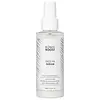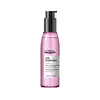What's inside
What's inside
 Key Ingredients
Key Ingredients

 Benefits
Benefits

 Concerns
Concerns

 Ingredients Side-by-side
Ingredients Side-by-side

Aloe Barbadensis Leaf Juice
Skin ConditioningBehentrimonium Methosulfate
Propanediol
SolventGlycerin
HumectantCoco-Caprylate
EmollientGlyceryl Stearate
EmollientCetearyl Alcohol
EmollientHydroxypropyl Guar Hydroxypropyltrimonium Chloride
Santalum Acuminatum Fruit Extract
AntioxidantEquisetum Arvense Leaf Extract
AstringentHibiscus Sabdariffa Flower Extract
Skin ConditioningSerenoa Serrulata Fruit Extract
Skin ConditioningCoffea Robusta Seed Extract
Skin ConditioningTerminalia Ferdinandiana Fruit Extract
AntioxidantPanthenol
Skin ConditioningCocos Nucifera Oil
MaskingSqualane
EmollientHydrolyzed Quinoa
Skin ConditioningSimmondsia Chinensis Seed Oil
EmollientBertholletia Excelsa Seed Oil
EmollientPersea Gratissima Oil
Skin ConditioningArgania Spinosa Kernel Oil
EmollientMacadamia Ternifolia Seed Oil
EmollientRosmarinus Officinalis Leaf Extract
AntimicrobialPolyquaternium-7
Parfum
MaskingPentylene Glycol
Skin ConditioningCaprylyl Glycol
EmollientEthylhexylglycerin
Skin ConditioningCitric Acid
BufferingAloe Barbadensis Leaf Juice, Behentrimonium Methosulfate, Propanediol, Glycerin, Coco-Caprylate, Glyceryl Stearate, Cetearyl Alcohol, Hydroxypropyl Guar Hydroxypropyltrimonium Chloride, Santalum Acuminatum Fruit Extract, Equisetum Arvense Leaf Extract, Hibiscus Sabdariffa Flower Extract, Serenoa Serrulata Fruit Extract, Coffea Robusta Seed Extract, Terminalia Ferdinandiana Fruit Extract, Panthenol, Cocos Nucifera Oil, Squalane, Hydrolyzed Quinoa, Simmondsia Chinensis Seed Oil, Bertholletia Excelsa Seed Oil, Persea Gratissima Oil, Argania Spinosa Kernel Oil, Macadamia Ternifolia Seed Oil, Rosmarinus Officinalis Leaf Extract, Polyquaternium-7, Parfum, Pentylene Glycol, Caprylyl Glycol, Ethylhexylglycerin, Citric Acid
Alternatives
Ingredients Explained
These ingredients are found in both products.
Ingredients higher up in an ingredient list are typically present in a larger amount.
Parfum is a catch-all term for an ingredient or more that is used to give a scent to products.
Also called "fragrance", this ingredient can be a blend of hundreds of chemicals or plant oils. This means every product with "fragrance" or "parfum" in the ingredients list is a different mixture.
For instance, Habanolide is a proprietary trade name for a specific aroma chemical. When used as a fragrance ingredient in cosmetics, most aroma chemicals fall under the broad labeling category of “FRAGRANCE” or “PARFUM” according to EU and US regulations.
The term 'parfum' or 'fragrance' is not regulated in many countries. In many cases, it is up to the brand to define this term.
For instance, many brands choose to label themselves as "fragrance-free" because they are not using synthetic fragrances. However, their products may still contain ingredients such as essential oils that are considered a fragrance by INCI standards.
One example is Calendula flower extract. Calendula is an essential oil that still imparts a scent or 'fragrance'.
Depending on the blend, the ingredients in the mixture can cause allergies and sensitivities on the skin. Some ingredients that are known EU allergens include linalool and citronellol.
Parfum can also be used to mask or cover an unpleasant scent.
The bottom line is: not all fragrances/parfum/ingredients are created equally. If you are worried about fragrances, we recommend taking a closer look at an ingredient. And of course, we always recommend speaking with a professional.
Learn more about Parfum